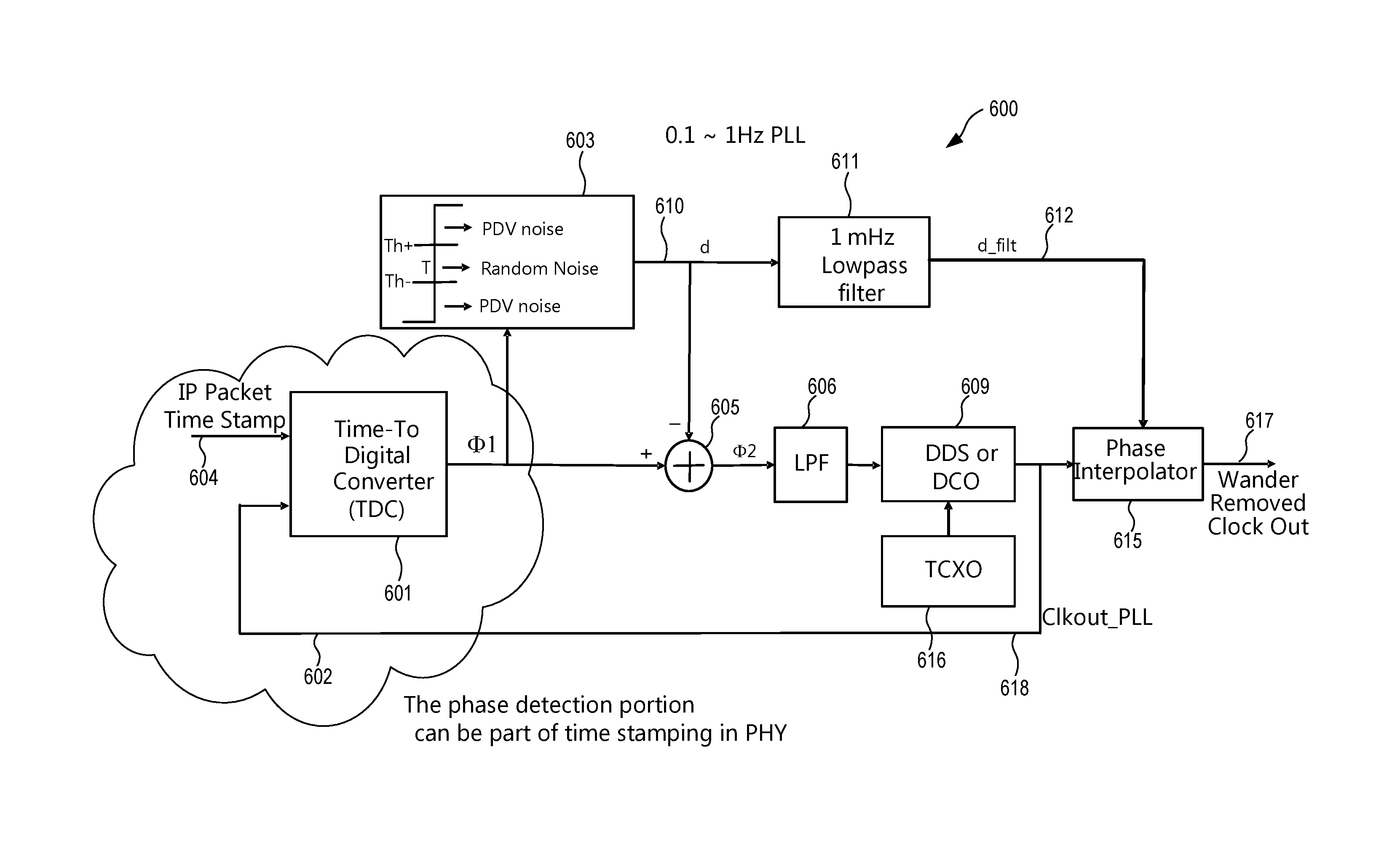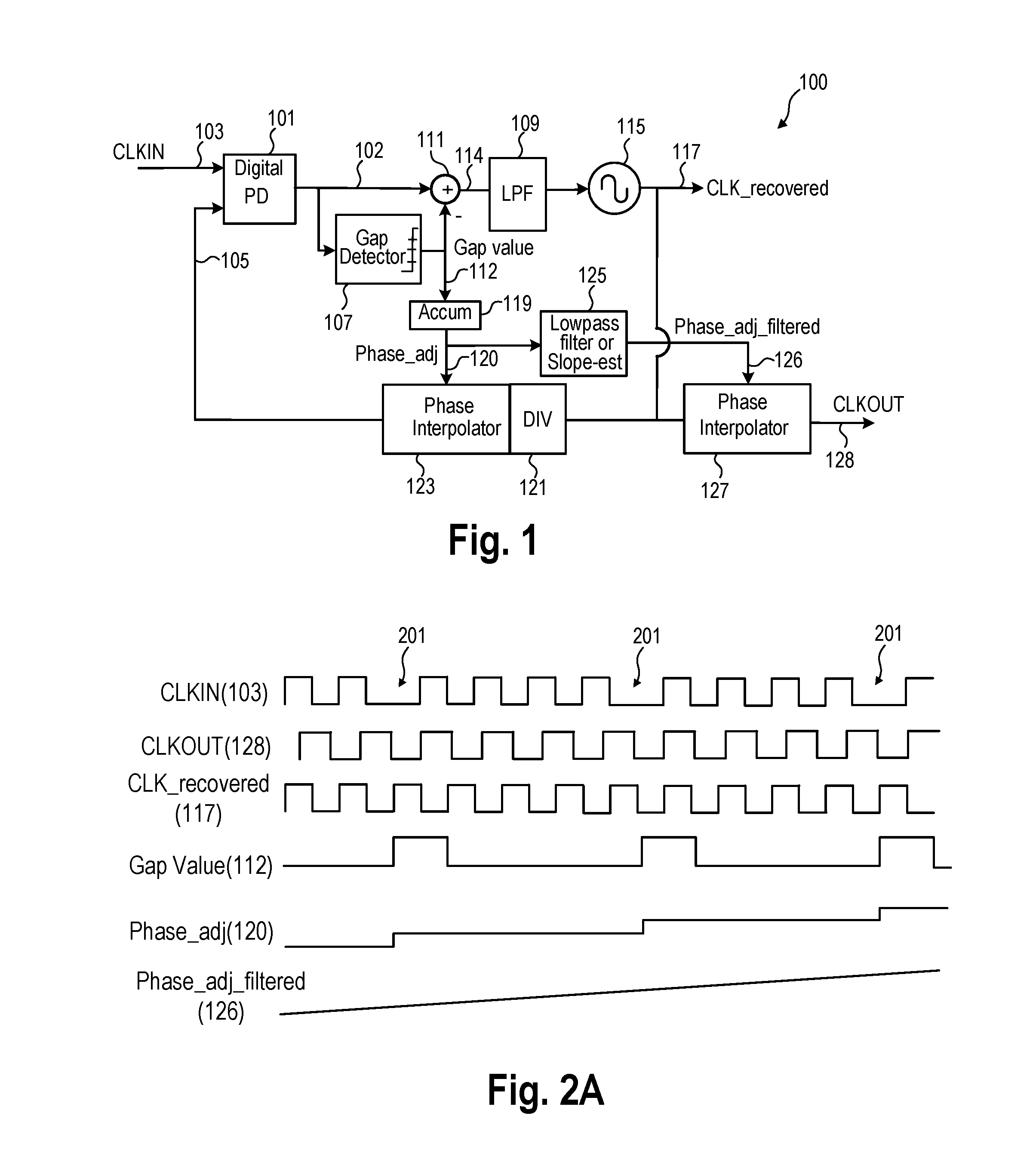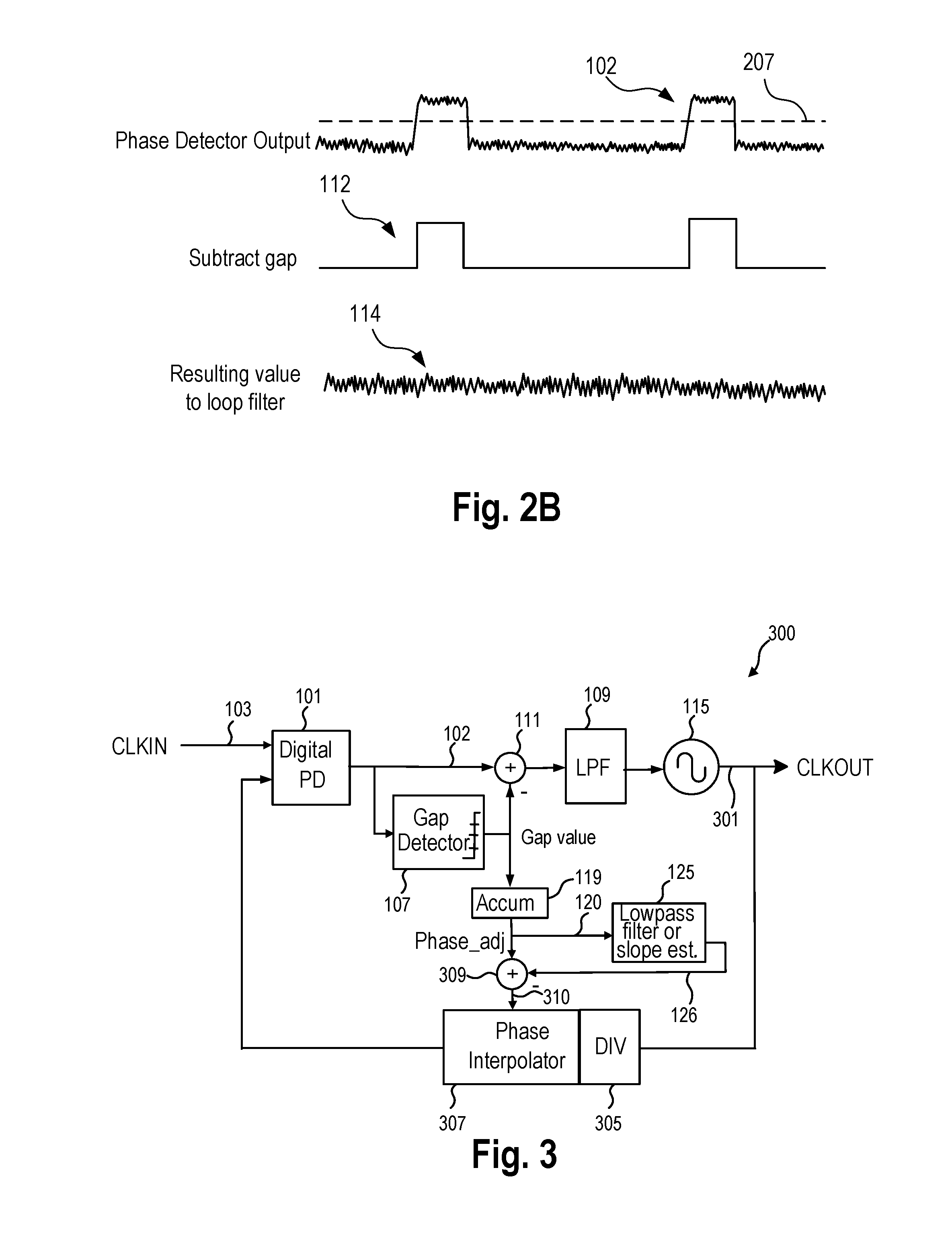Dual path timing wander removal
a dual-path, time-varying technology, applied in the field of jitter, can solve problems such as systematic jitter, system performance cannot be guaranteed, jitter caused by gaps in downstream systems, etc., and achieve the effect of reducing wander
- Summary
- Abstract
- Description
- Claims
- Application Information
AI Technical Summary
Benefits of technology
Problems solved by technology
Method used
Image
Examples
Embodiment Construction
[0010]In an embodiment, a method includes determining a timing difference between a first signal and a second signal and supplying the timing difference. An excursion detector detects if a magnitude of the timing difference is above a predetermined timing threshold and supplies as an excursion detector output a first adjustment if a magnitude of the timing difference is above the predetermined threshold and otherwise supplies as the excursion detector output a second adjustment. An arithmetic circuit receives the excursion detector output and adjusts the timing difference by the first or the second adjustment. A loop filter receives an output of the arithmetic circuit. An oscillator is controlled based on the loop filter output and supplies an oscillator output signal. An output of the excursion detector is low pass filtered.
[0011]In another embodiment an apparatus includes an excursion detector that is coupled to receive a timing difference between a first signal and a second signa...
PUM
 Login to View More
Login to View More Abstract
Description
Claims
Application Information
 Login to View More
Login to View More - R&D
- Intellectual Property
- Life Sciences
- Materials
- Tech Scout
- Unparalleled Data Quality
- Higher Quality Content
- 60% Fewer Hallucinations
Browse by: Latest US Patents, China's latest patents, Technical Efficacy Thesaurus, Application Domain, Technology Topic, Popular Technical Reports.
© 2025 PatSnap. All rights reserved.Legal|Privacy policy|Modern Slavery Act Transparency Statement|Sitemap|About US| Contact US: help@patsnap.com



